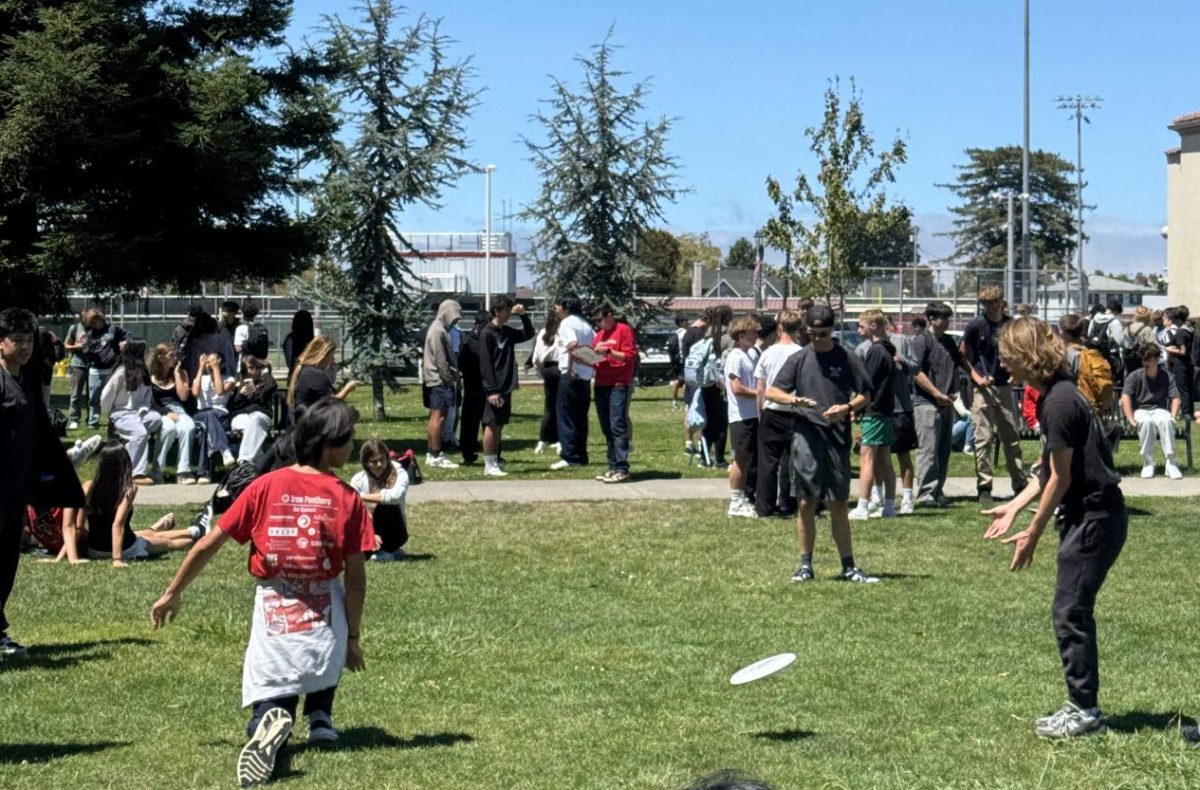According to the Google Dictionary, death is “the end of the life of a person,” or “the destruction or permanent end of something.” While it is true — death often conjures up feelings of hopelessness, loss, and grief — members of the Mexican and Hispanic communities would find the formal definition lacking. On Día de los Muertos (Day of the Dead), families celebrate and honor loved ones who have passed on through altars, family dinners, shared stories, and much more.
“Most people in the United States [have] this fear of death, of the unknown, of what happens after we die,” Spanish teacher Eric Vences said. “But in our culture, it’s seen as an opportunity to connect and celebrate.”
Burlingame students and teachers alike celebrate Día de los Muertos — some more traditionally, while others to a more moderate degree. Nonetheless, all still stay true to the core values of the holiday: family, remembrance, and celebration. However, the Burlingame community would agree to add one more: reconnection.
“I feel like we sometimes neglect our traditions,” Dual Enrollment teacher Diana Espinoza Osuna said. “A lot of it [is] because of how busy we are, but I think it’s important to go back to our roots and our traditions to remember why it’s important.”

In Mexico, Día de los Muertos is one of the most important times of the year. The colorful traditional banners, catrina skull makeup, and vibrant festivals are part of it, but more important is the communal aspect of the celebration.
“We used to go to Guadalajara, Mexico [to celebrate],” Vences said. “My grandma’s family is there and they live on a big ranch. Nearby, there was a cemetery that we used to go to, and we would camp out there with food [and] pictures overnight because it lasts a few days. It’s a celebration and also a reason to bring the whole family together.”
Junior Sem Cerna Aviles moved to the U.S. when she was three. Unlike the celebration in Mexico, her family celebrates Día de los Muertos with a simple prayer in the morning. She attributes her cultural disconnect to the geographical distance from her relatives.
“All of my family is in El Salvador… and they’re the ones who go out and celebrate,” Cerna Aviles said. “None of our ancestors are buried here, I don’t have anyone to mourn, and I don’t have any graves to visit. It’s that disconnect and distance [that prevents me from celebrating] because I’m not with the people that I should be celebrating.”
Growing up, junior Christopher Spinoso felt a similar disconnect to Día de los Muertos. Nonetheless, his family does their best to stay true to the true spirit of celebration. Every year, Spinoso’s family puts up an ofrenda for his grandmother and decorates it with food, candles, and his grandmother’s favorite items.
“I personally miss my grandma a lot,” Spinoso said. “I miss her touch in the world, so it gives me a deeper appreciation of what this celebratory event is now because I get to connect with her more, and talk to her through prayers.”
Over time, Spinoso’s appreciation for the holiday grew. He uses the month of Día de los Muertos to reconnect with his culture and family.
“[My favorite part] is just my family coming together. We’re at the dinner table eating as a family,” Spinoso said. “It’s that Thanksgiving feeling, you’re honoring your ancestors, you’re having fun together, eating wonderful food. It’s just an amazing experience.”
As a mother, Espinoza Osuna is determined to pass on her family’s cultures and traditions to her children, no matter how far they live from their homeland.
“I sit down with my boys [because] for me, it’s important to continue passing on the tradition to them,” Espinoza Osuna said. “Even though they were born here, it’s important for them to remember our family, our loved ones, and to recognize everything they contributed.”












































